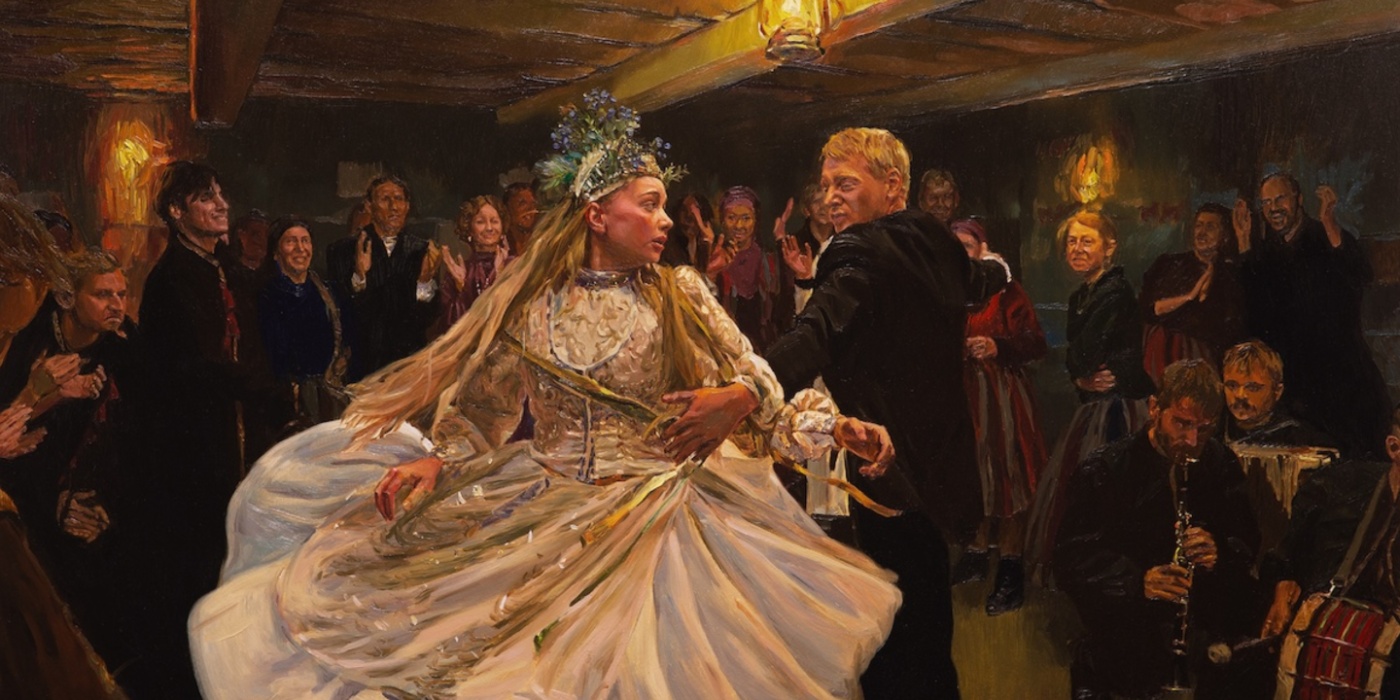24FRAME Future Film Fest 2024: I Vincitori
Il 24FRAME Future Film Fest celebra i vincitori 2024 e dà appuntamento a Modena dal 22 al 24 novembre. Black Butterflies e Playing God tra i premiati, insieme a un'edizione ricca di eventi e iniziative.
Listeners:
Top listeners:
 play_arrow
play_arrow
ENGLISH Channel 01 If English is your language, or a language you understand, THIS IS YOUR CHANNEL !
 play_arrow
play_arrow
ITALIAN Channel 02 Se l’italiano è la tua lingua, o una lingua che conosci, QUESTO È IL TUO CANALE!
 play_arrow
play_arrow
EXTRA Channel 03 FRED Film Radio channel used to broadcast press conferences, seminars, workshops, master classes, etc.
 play_arrow
play_arrow
GERMAN Channel 04 Wenn Ihre Sprache Deutsch ist, oder Sie diese Sprache verstehen, dann ist das IHR KANAL !
 play_arrow
play_arrow
POLISH Channel 05
 play_arrow
play_arrow
SPANISH Channel 06 Si tu idioma es el español, o es un idioma que conoces, ¡ESTE ES TU CANAL!
 play_arrow
play_arrow
FRENCH Channel 07 Si votre langue maternelle est le français, ou si vous le comprenez, VOICI VOTRE CHAINE !
 play_arrow
play_arrow
PORTUGUESE Channel 08
 play_arrow
play_arrow
ROMANIAN Channel 09 Dacă vorbiţi sau înţelegeţi limba română, ACESTA ESTE CANALUL DUMNEAVOASTRĂ!
 play_arrow
play_arrow
SLOVENIAN Channel 10
 play_arrow
play_arrow
ENTERTAINMENT Channel 11 FRED Film Radio Channel used to broadcast music and live shows from Film Festivals.
 play_arrow
play_arrow
BULGARIAN Channel 16 Ако българският е вашият роден език, или го разбирате, ТОВА Е ВАШИЯТ КАНАЛ !
 play_arrow
play_arrow
CROATIAN Channel 17 Ako je hrvatski tvoj jezik, ili ga jednostavno razumiješ, OVO JE TVOJ KANAL!
 play_arrow
play_arrow
LATVIAN Channel 18
 play_arrow
play_arrow
DANISH Channel 19
 play_arrow
play_arrow
HUNGARIAN Channel 20
 play_arrow
play_arrow
DUTCH Channel 21
 play_arrow
play_arrow
GREEK Channel 22
 play_arrow
play_arrow
CZECH Channel 23
 play_arrow
play_arrow
LITHUANIAN Channel 24
 play_arrow
play_arrow
SLOVAK Channel 25
 play_arrow
play_arrow
ICELANDIC Channel 26 Ef þú talar, eða skilur íslensku, er ÞETTA RÁSIN ÞÍN !
 play_arrow
play_arrow
INDUSTRY Channel 27 FRED Film Radio channel completely dedicated to industry professionals.
 play_arrow
play_arrow
EDUCATION Channel 28 FRED Film Radio channel completely dedicated to film literacy.
 play_arrow
play_arrow
SARDU Channel 29 Si su sardu est sa limba tua, custu est su canale chi ti deghet!
 play_arrow
play_arrow
“Conversation with” at the 20th Marrakech IFF, interview with actor Willem Dafoe Bénédicte Prot
todayNovember 7, 2024
6

At the 24FRAME Future Film Festival, “The Peasants”, directed by Hugh Welchman and Dorota Kobiela Welchman, opened the competition, immersing viewers in the life of a Polish village in the late 19th century. This visually captivating film follows Jagna, a young woman who defies the restrictive norms of her community, with her beauty and independent spirit sparking jealousy and conflict.
When asked about the inspiration for adapting the Nobel Prize-winning novel, Hugh Welchman explained that his wife and co-director Dorota Kobiela had read “The Peasants” as a teenager. Later, while painting for “Loving Vincent”, she revisited the story, finding that “the language was like someone describing a painting to you,” Welchman recalled. This poetic imagery inspired them to create a fully oil-painted animation, the second of its kind after Loving Vincent.
Creating an oil-painted film is a labour-intensive process, as Welchman explained: “The average frame on “Loving Vincent” took two and a half hours; for The Peasants, it took five.” With a narrative that includes dance scenes, battles, and large village gatherings, the film required intricate, painstaking work. Welchman also highlighted the connection to the 19th-century realism movement: “The realism style was more difficult than the thick, impasto brush strokes of Van Gogh’s style,” but it perfectly captured the rural, pastoral setting.
“The Peasants” addresses contemporary societal themes, like the societal pressure on women to conform. Hugh Welchman remarked, “There’s a timelessness in how societies often scapegoat those who don’t conform, and unfortunately, this is often women.” The film explores this dynamic through Jagna’s struggles, highlighting that while decades may have passed, the issues of patriarchal oppression and violence against women persist.
Nature, represented through changing seasons, plays a dual role in“The Peasants”as both a backdrop and a place of refuge for Jagna. “The cyclical nature of life is ever-present…while human dramas unfold, the seasons keep turning,” Welchman observed. Nature offers Jagna moments of respite from the village’s scrutiny and control, reflecting her deep-seated yearning for freedom. In Welchman’s words, “She naturally feels that society should be different from how it is…and nature becomes her escape.”
The intricate oil-painted visuals and nuanced storytelling make The Peasants an unforgettable cinematic experience. As Welchman said, “The Peasants” captures “all of the human emotions in one story—love, passion, jealousy, and conflict,” presenting a poignant reflection on human resilience and the cyclical nature of life.
The Peasants tells the story of Jagna, a young woman determined to forge her own path within the confines of a late 19th century Polish village – a hotbed of gossip and on-going feuds, held together, rich and poor, by pride
in their land, adherence to colourful traditions and deep-rooted patriarchy. When Jagna finds herself caught between the conflicting desires of the village’s richest farmer, his eldest son, and other leading men of the community, her resistance puts her on a tragic collision course with the community around her.
Written by: Federica Scarpa
Guest
Hugh WelchmanFilm
The PeasantsFestival
24 Frame Future Film FestivalIl 24FRAME Future Film Fest celebra i vincitori 2024 e dà appuntamento a Modena dal 22 al 24 novembre. Black Butterflies e Playing God tra i premiati, insieme a un'edizione ricca di eventi e iniziative.
Self, a Pixar Sparkshort title by Searit Huluf, premiering at the Frame Future FF, is literally poetry turned into cinema
Dal 6 al 10 novembre 2024, Bologna ospita 24FRAME Future Film Fest, la principale manifestazione italiana dedicata all’animazione e alle tecnologie avanzate nell’audiovisivo.
La direttrice artistica del 24FRAME Future Film Fest, Giulietta Fara, introduce il programma della rassegna sul meglio del cinema d’animazione indipendente in circolazione.
Terry Gilliam, brilliant director of many groundbreaking films, received the Stella della Mole Award and we met him on this occasion fora chat on his style in filmmaking.
Alberto Battocchi, film commissioner at Trentino Film Commission, on Focus London 2025, Vermiglio, Green Film and Trentino’s evolving role on screen.
Simone Gandolfo, President of Valle d’Aosta Film Commission, on Focus London 2025 and why the Alpine region is a hidden gem for film and TV producers.
todayDecember 12, 2025 4
Wim Wenders will preside over the International Jury of the 76th Berlinale, overseeing the selection of the Golden and Silver Bears in February 2026.





© 2023 Emerald Clear Ltd - all rights reserved.